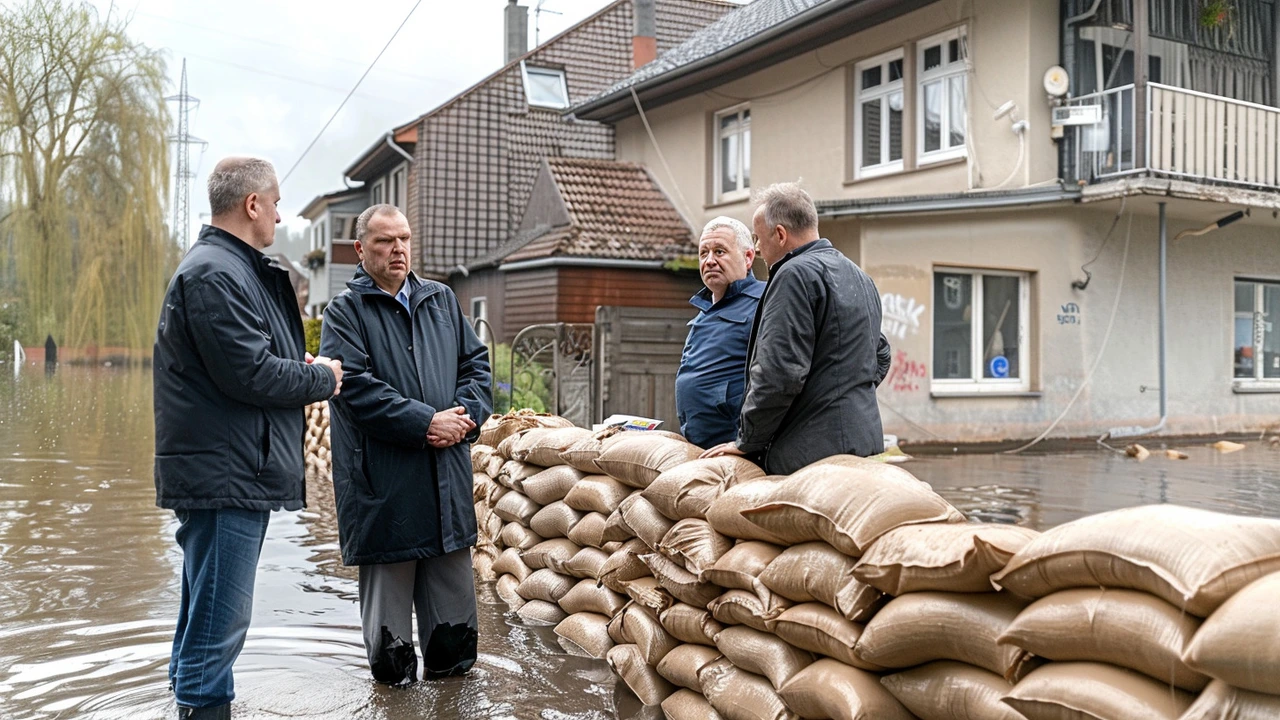Germany Floods: What Happened, Impact and How to Stay Safe
Heavy rain rolled across western and central Germany this summer, turning rivers into raging torrents. Towns along the Rhine, Ahr and Elbe saw water jump over banks, flooding streets, homes and farms. The damage was fast, the water rose quickly, and many people found themselves scrambling for higher ground.
Why the floods were so severe
Scientists say the storm system was unusually intense, dumping more than 150 mm of rain in some spots over 24 hours. The soil was already saturated from earlier showers, so the ground couldn’t soak up anything more. When the rivers got overloaded, they broke their banks and spilled into towns.
Climate patterns are shifting, and experts notice that extreme rain events are becoming more common in Europe. That doesn’t mean every storm will be a disaster, but it does raise the stakes for flood‑prone areas.
What the floods meant for people on the ground
In places like Ahrweiler and Bad Neuenahr‑Ahrweiler, whole neighborhoods were under water. Cars were swept away, basements filled up, and power lines went down. Local authorities launched evacuation orders, moving thousands to temporary shelters.
Businesses suffered too. Shops lost inventory, factories had to shut down, and farms saw crops washed away. The economic hit is expected to run into hundreds of millions of euros.
But the response showed the best of community spirit. Volunteers helped sandbag vulnerable buildings, rescue teams pulled people from flooded streets, and neighbors shared food and blankets.
Practical tips if you ever face a flood
1. Stay informed – keep an eye on weather alerts and follow local officials’ advice.
2. Move to higher ground immediately if water starts rising. Don’t wait for a warning if you see water creeping up.
3. Turn off electricity if you can do it safely. Water and electricity don’t mix.
4. Pack an emergency bag with clothes, medication, phone charger and important documents. Having it ready saves precious minutes.
5. Never drive through flooded roads. You can’t tell how deep the water is, and it can sweep a car away.
How Germany is rebuilding
After the water receded, the focus turned to cleanup and rebuilding. The government pledged emergency funding to repair roads, restore power and support those whose homes were damaged. Insurance companies are processing claims, but many victims still wait for payouts.
Long‑term plans include better flood‑defence walls, upgraded drainage systems and more green spaces that can absorb rain. Some towns are also looking at early‑warning sensors that alert residents before water reaches dangerous levels.
While the floods left a painful mark, they also sparked a conversation about preparedness and climate resilience. If you live near a river or in a low‑lying area, taking a few simple steps now can make a big difference when the next storm hits.
Stay aware, keep a plan ready, and help your neighbors if you can – that’s the best way to turn a scary event into a story of community strength.

4
Jun
Mass evacuations are underway in western Germany due to severe floods caused by heavy rainfall, leaving 12 dead and widespread destruction. Chancellor Olaf Scholz visited the ravaged regions to offer condolences and oversee relief operations. The German military plays a crucial role in the rescue efforts as submerged villages in North Rhine-Westphalia and Rhineland-Palatinate struggle with the disaster's aftermath.
Read More
